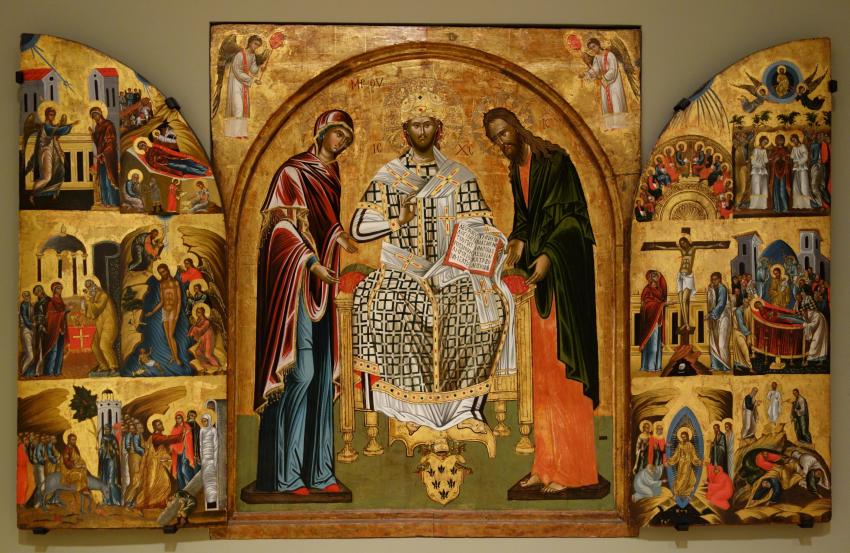- Read offline
- Access all content
- Use the in-app Map to find sites, and add custom locations (your hotel...)
- Build a list of your own favourites
- Search the contents with full-text search functionality
- ... and more!
A Note on Byzantine Art
Vehicles of the spirit

Painted decoration in Greek churches often follows a set ‘hierarchical’ formula, to reproduce the universe symbolically. Christ Pantokrator (‘all-governing’) or the Christ of the Ascension reigns in the dome of heaven, surrounded by angels, while below the Virgin and John the Baptist intercede for humanity. The Virgin and Child occupy the central apse.
Surrounding vaults and upper registers show the Dodekaorton, the ‘Twelve Feasts’ of the church, while in the lower, terrestrial zone are saints, prophets and martyrs (whose gory deaths are also a favourite subject in the narthex).
Yet even in the bloodiest Byzantine martyrdoms there is a certain trance-like detachment. Its saints reside on a purely spiritual plane; on church walls or icons their most striking feature is often their intense staring eyes. They never play on the heartstrings or ask the viewer to relive the pain of the Passion or coo over a baby Jesus; the Virgin (the Panagía, or ‘all-holy’), cocooned in black or blue like an Orthodox nun, has none of the charms of a Madonna.
Image by Daderot

